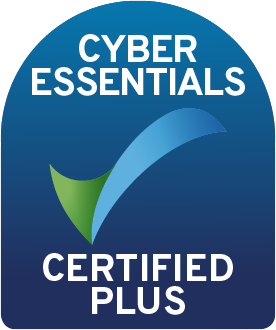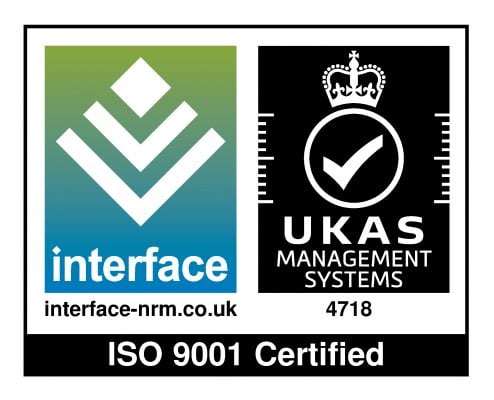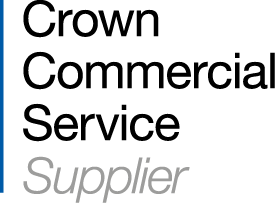With large, dispersed teams in need of complex, often life-saving training courses, and facing strict regulatory compliances, dwindling budgets and limited resources – healthcare organisations now more than ever are recognising the benefits of implementing a powerful healthcare e-learning strategy to solve a number of L&D challenges.
To support a successful e-learning strategy, healthcare organisations must first find the right tools and platforms that will help deliver it. When looking for an e-learning solution such as a learning management system (LMS), L&D teams should outline their must-have features and functionality, such as course development tools, automated reporting tools and personalised learning pathways. It’s worth noting, however, that even with a robust, feature-rich e-learning solution, healthcare organisations cannot expect to get the most out of their e-learning investment without the right hosting partner to support the strategy.
What should you look for in your healthcare LMS? Discover these essential features.
We have successfully implemented healthcare e-learning solutions for many healthcare and NHS organisations, providing all the support and expertise required to maximise the potential of their chosen Moodle or Totara solutions. Visit our case studies page to find out what our healthcare clients have to say about working with Hubken.
Once the perfect healthcare e-learning solution has been identified, along with the right hosting provider, now is the time to focus on building a successful e-learning strategy – utilising all the powerful tools, features, functionality, and resources available with the chosen solution. To help you design the most effective strategy, keep reading to discover our top five tips.
Identify your L&D objectives
The first step in designing a successful healthcare e-learning strategy is to identify goals and objectives – what do you want to achieve with this strategy? For example, when Mountain Healthcare came to Hubken looking for an e-learning solution, they needed a platform that would support training for large numbers of new staff at a time. They needed a centralised system that would deliver comprehensive onboarding training, compliance training and continuing professional development opportunities.
When defining key objectives, it’s important to keep wider company goals in mind but also the individual goals of employees, keeping their learning experience in mind too. Once objectives have been identified, you can begin to outline how these will be measured, using e-learning tools such as competency frameworks to achieve this.
What are competency frameworks? Read our ultimate guide.
Ensure key stakeholders are engaged
To maximise the efficacy of an e-learning strategy, it’s vital that L&D teams focus on engaging healthcare professionals within the organisation throughout the entire process. Rather than asking employees to participate after the e-learning platform has been implemented, they should be involved right from the start – even during the development process.

Employees can contribute their own ideas and experience by helping with the development of the e-learning strategy and resources. In doing this, L&D teams can get a better understanding of what employees want and need from the strategy and incorporating their contributions will result in higher learner satisfaction and engagement levels. As a result, organisations can ultimately expect a better ROI as employees are far more likely to utilise an e-learning platform if it fulfils their L&D requirements and delivers their desired learning experiences.
How to measure the ROI of your LMS – download our free guide.
Deliver valuable healthcare e-learning content
A core component of any healthcare e-learning strategy is delivering training content and resources that address the specific L&D requirements, challenges, compliances, regulations, and best practices of the organisation. To achieve this, L&D teams can use content creation tools found in e-learning platforms such as an LMS or acquire bespoke e-learning content that not only encapsulates all the L&D necessities but delivers highly engaging, interactive elements that produce better training results.
With a multitude of employees spread across a diverse range of departments, healthcare L&D teams can often struggle when keeping track of all the training materials required to deliver diverse training opportunities to the entire workforce. E-learning platforms provide the solution by serving as a centralised platform which houses all training materials and that can be easily accessed by relevant employees. Hubken client, Healthcare Education England West Midlands, found their Moodle platform to be particularly effective in providing a standardised framework within which to facilitate all its learning and effectively manage course material and other resources. As a healthcare organisation with a broad scope of learning activities, this is particularly beneficial as it ensures that ‘the teaching doesn’t ever fragment into multiple pockets of disjointed learning’.
Find out why HEE West Midlands came to Hubken in search of a powerful Moodle solution here.
Create clear markers for progression and achievements
To measure the success of an e-learning strategy, there needs to be a clearly defined method of monitoring progress and recognising employee achievements. With an e-learning platform, healthcare organisations have access to a wide array of features and tools that do exactly that.
LMS learning plans provide structure to the learning process, with a clear path for learners to follow, outlining what needs to be done to achieve the desired L&D outcomes. For example, a learning plan may map out the skills that need to be acquired, identify the courses and lessons that will support skills development, and provide a timeframe in which these courses should be completed. When incorporating learning plans into the healthcare e-learning strategy, LMS assessments should also be included – typically at the end of a module or course. Assessments come in a number of formats, such as multiple-choice quizzes or gamified tests, and are a reliable and comprehensive way to monitor progress and test learners on their skills development and knowledge acquisition.

When Hubken client, Mountain Healthcare, shared some of the top benefits that came from implementing their Totara Learn solution, they included Certifications and Open Badges. These features can be used to celebrate learner progress and are typically awarded to learners when they have reached a milestone such as completing a course or achieving 100% on an assessment. For healthcare organisations, these clear markers of learner progress are valuable when providing evidence of mandatory compliance training.
What is Totara Learn? Visit our product page to discover everything you need to know.
Create opportunities for feedback
To achieve ongoing success with an e-learning strategy and ensure it is constantly evolving and improving alongside wider organisational practices, L&D teams need to create continual opportunities for feedback. Employees should be encouraged to share their thoughts and feedback on areas such as the learning experience, platform effectiveness, and the quality of training content. These opportunities should be afforded throughout the entire learning process, including prior to the implementation of the strategy. For example, once the e-learning strategy has been developed, L&D teams can ask for feedback from a select group of key stakeholders, gathering any thoughts and feedback prior to deploying the strategy.

Gathering feedback is straightforward when using performance management tools found in platforms such as Totara Perform, or social features found in an LXP or LMS. In fact, Hubken client Princess Alice Hospice use the social functionality in their Moodle platform (such as Forums, Chat and Wikis) to ‘generate feedback, discussions, and for use internally for its mandatory training requirements’. Using these tools encourages learners to play an active role in the learning process and contribute to the continuous improvement of the e-learning strategy.
LMS, LXP, or TXP – which one is right for you? Read our ultimate guide to find out.
Discover the power of a Hubken healthcare e-learning solution
In need of a powerful e-learning platform that will help you successfully implement your e-learning healthcare strategy? Chat with one of our e-learning experts today to find out what a Hubken solution can do for your L&D. Or if you’d like to find out more about the power of e-learning within healthcare organisations, visit our dedicated healthcare hub today.

Visit our FREE Healthcare LMS Hub
Access a wealth of LMS resources designed to help healthcare organisations like yours successfully solve e-learning challenges.

.png?width=1080&height=150&name=Slim%20blog%20CTAs%20(8).png)
.png?width=1080&height=150&name=Slim%20blog%20CTAs%20(12).png)



